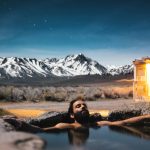DIY Travel Photography: Mastering Stunning Vacation Photos
Handling Diverse Shooting Conditions
Different locations present varied lighting and weather conditions, impacting the quality of photos. In bright sunlight, adjusting the camera settings to a lower ISO and faster shutter speed can prevent overexposure. Using a polarizing filter can also reduce glare and enhance colors. For low light or nighttime shots, a higher ISO and slower shutter speed may be necessary, but keeping the camera steady is vital to avoid blurry images.
Adapting to weather changes is also important. Rain covers for the camera can protect it from moisture, while microfiber cloths are useful for cleaning lenses in humid or wet conditions. Knowing how to adjust white balance settings on the fly can help manage color accuracy when shooting under different light sources, such as incandescent bulbs or shaded areas.
These practical steps ensure that photographers can capture beautiful images no matter where their travels take them.
Engaging with Culture and Locals
When traveling, capturing the essence of a place often involves engaging with its culture and locals. This means taking the time to understand local customs, traditions, and everyday life.
Talking to local residents can offer insights that you might not find in guidebooks. Simple interactions, such as buying from a market or visiting a local cafe, can provide photographic opportunities rich in culture.
Always seek permission before photographing people, particularly in communities where traditions are deeply respected. A smile and a polite request can go a long way toward building trust and making subjects comfortable.
Immersing oneself in festivals, markets, or local gatherings can also provide dynamic and vibrant photo opportunities. These events often showcase traditional clothing, music, and dances, which can add depth to travel photography.
Photographing locals in their environment often captures the true spirit of a destination. Whether it’s a craftsman at work, a street performer, or a family enjoying a public park, these moments tell compelling stories through images.
Taking the time to learn a few phrases in the local language can make a huge difference. A simple “hello” or “thank you” can help establish rapport and show respect for the local culture.
Respect privacy and cultural sensitivities. Some cultures have specific practices around photography, and being aware of these can help avoid misunderstandings.
Editing for Impact: Post-Processing Techniques
Post-processing can enhance travel photos by refining details, balancing colors, and improving overall composition. Utilizing appropriate software and proper techniques can transform a good photo into a visually striking image.
Finding the Right Editing Software
Choosing the right editing software can make a significant difference. There are various options available, ranging from professional tools like Adobe Lightroom and Photoshop to user-friendly options like Snapseed and VSCO.
Adobe Lightroom is known for its powerful features and precision, allowing for extensive adjustments. Photoshop offers in-depth manipulation capabilities ideal for more complex edits. For those seeking simplicity, Snapseed provides straightforward controls and effective presets. VSCO combines editing features with social sharing, appealing to users who want an all-in-one solution.
Considering what features are most necessary for your needs can help in making the right choice. Ease of use, available tools, and cost are important factors to evaluate.
Balancing Colors and Saturation
Color balance and saturation are critical in bringing photos to life. Adjusting the white balance can correct color casts, ensuring the colors appear natural. Enhancing saturation needs careful handling; too much saturation can make photos look artificial.
In Lightroom, the temperature and tint sliders adjust white balance effectively. The saturation slider should be increased gradually to maintain a natural look. Utilizing the HSL (Hue, Saturation, and Luminance) panel allows for fine-tuning of specific colors, enhancing or toning down individual hues.
Snapseed’s tools include white balance adjustments and saturation controls. The “Drama” filter can enhance overall impact, but moderation is key. Selecting the right balance ensures photos remain engaging without appearing overly edited.



